
4 Elements: Persona 3 Portable
March 29th, 2011 by david brothers | Tags: persona, Video Games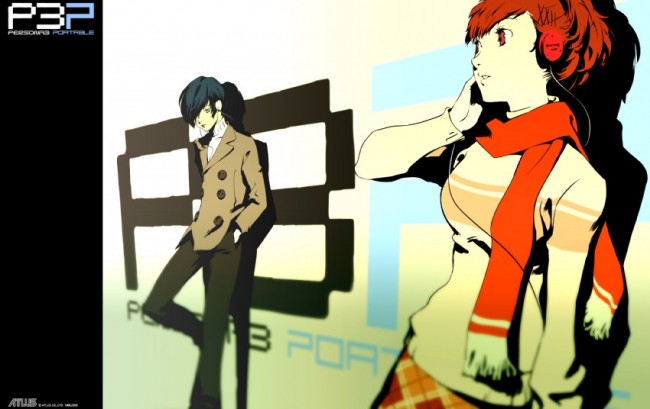
Shin Megami Tensei: Persona 3 Portable is published by Atlus for Sony’s PSP. Shigenori Soejima designed the characters for P3P, and also the characters for Shin Megami Tensei: Persona 4
and Catherine
. His style is sharp and clean, fit for animation but just as attractive in the form of still images. He has a nice sense of fashion, and seems to be fond of shirts that ruffle, dark jackets, and black slacks. Shoji Meguro, composer of Persona 4‘s soundtrack, also did a solid job here. The score never interferes with the gameplay, instead enhancing the mood as needed. I like P3P quite a bit, though I’m maybe halfway through it thus far. I keep flirting with writing about it, though, and you know what? Enough pussyfooting. Four things about Persona 3 Portable that I enjoy:
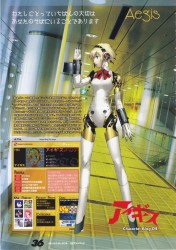
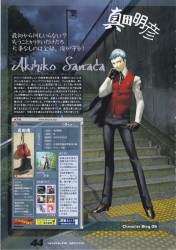

Persona 3 Portable is about personal growth. The central metaphor for the Persona series, at least as far as I’m concerned, is growth as an individual. The characters must embrace their hidden talents or, as in Persona 4, come to terms with themselves before they can be turned into something radiant. In Persona 3, the cast is privy to a secret that most of society does not know. To make it through this horror, they have to depend on and learn to trust each other in battle. They form a group, Specialized Extracurricular Execution Squad or SEES, that go out at night to try and make the world better.
The high school simulation puts the interpersonal growth of your character under your control, and that growth directly affects your performance in battle. You are in charge of making friends, and that involves what is essentially a dating game. You can hang out with people, you personally choose answers to their questions that reflect a number of different personality choices, and you can even date people. The role-playing aspect is interesting–if I choose an option I don’t necessarily believe, I get a slight pang of guilt. That doesn’t fit the character I’m choosing to play. These (fictional) characters are granting me a large measure of trust, and betraying that feels wrong.
Your character is the only one in the game that can create and utilize multiple Personas, while other players are stuck with Personas that are a reflection of their own personality in some way. Your character being able to possess several Personas is a nod to the fact that you, the player, are one of several billion possible people. So, since you can’t possibly have one specific personality, you’re given a selection.
Building relationships in the simulation portion of the game gives you greater power when it comes time to dungeon crawl. The stronger your relationships, the stronger your Personas are. It’s a fitting simulacrum of real life. The better your friendships, the better your mental health, and the more self-actualized you can afford to be. It’s like having a safety net. You know that you have help if you need it, and that lets you push forward.
To summon their Personas, the characters place a gun, called an Evoker, to their heads and pull the trigger. Rather than a spray of blood, what looks like broken glass erupts out of their skull and the Persona appears. Aside from being a cool visual, I think this represents something more. To really open yourself up, to share that light that’s inside you, you have to put yourself at the whim of others. You risk being ostracized, embarrassment, and most of all, failure. The gun represents a tool to engineer the death of yourself, of your ego, and that allows your Persona to appear fully formed. Maybe you like to sing at karaoke, but it takes six shots of tequila to get you there. Those shots are your Evoker. The gun is the equivalent of pausing, taking a deep breath, and stepping forward.
Going to high school requires making friends. You can’t make friends without opening up and genuinely building a relationship. Making friends makes you stronger, and more reliable in times of danger. Being stronger allows you to protect those friends. The act of protection forces you to open up and embrace your skill. And so we return to begin again. Everything is related, and all of it is more easily mapped to growing as a human being, than growing as a fighter or magician or whatever.
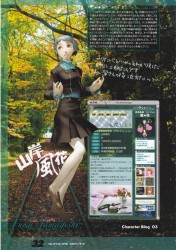
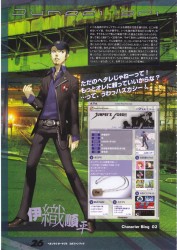
P3P is a PSP adaptation of a PS2 game, and required a bit of adjustment to fit the smaller screen and new context. P3P‘s story is told by way of a visual novel, which is an interesting way to do this type of game. Animation is kept at a minimum, and dialogue is still spoken, but the visuals are near-static images, and events are explained via stage direction. Rather than seeing someone slam a door, you hear the sound and you read the little caption box.
More than anything else, P3P reminds me of radio plays. Everything hinges on the actors involved and your own imagination. While comic books give you most of an image and let you fill in the blanks, P3P works more like an illustrated novel. Physical action is left entirely up to your imagination, while the look and personalities of the characters is given to you.
Strangely, this makes it even easier to be drawn into the game. The tradeoff between the specificity of animation and the freedom of imagination means that you have much more invested in the story. You create significant portions of the game as you play, and what you create fits into what is already created like a lost puzzle piece. Aigis, a robot girl, breaking into a character’s room is paced according to your own thoughts. While listening to a conversation that’s set around a table, you choose the table setting and the location of where the voices are coming from.
This is largely done unconsciously and entirely on the fly, but it helps make your playthrough yours, rather than something you watch. It’s the equal and opposite brother of Hideo Kojima’s cinematic heavy Metal Gear Solid franchise, where you aren’t so much a part of the story at hand as along for the ride. In P3P, you are the ride. The characters move and think as you want them to. The only time you don’t have a significant amount of control over them is when you’re dungeon crawling.
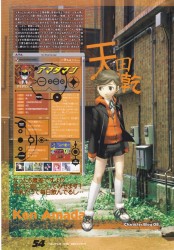

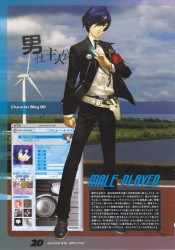
P3P is full of things to do. I don’t really dedicate a lot of time to playing games any more, and ones that require huge time investments to be enjoyed tend to get sold asap. In P3P, you can pick it up and go out and work on your friendships. Maybe you want to finally hit a certain rank with the Gourmet King, or begin dating Yuko. You can check and see when they’re free and then pursue them. You can get short interactions with them or longer, more involved conversations.
Or you can run through a few floors of the dungeon. The floors tend to be short, maybe five minutes long on average, and are randomly generated, so while they are same-y, they aren’t identical. Each set of floors is themed, enemies vary from floor to floor, and there are lost souls or treasures to be found in each section.
There’s also a quest system that’s handled by an otherworldly woman named Elizabeth. She isn’t familiar with our world, so she requests certain items or to go on dates with you to explore the land. These quests give you bonus items or cash, and provide short-term goals in long-term gameplay.
Part of the high school simulation is building your stats. You have Academics, Charm, and Courage to worry about. These can be increased by studying, doing dangerous things, drinking coffee, getting answers right on a test, or any of a dozen things. Having a high Charm means that you can talk to certain girls or get specific prizes. High Academics helps you score higher on tests.
At a certain point in the game, you can walk a dog. While walking the dog, you may be joined by a teammate, and you’ll have a brief characterization-building conversation. There’s nothing particularly deep to it. It’s just another information delivery system.
These choices, and the others I didn’t mention, make for a well-rounded game. The way I’m playing now, I’m not going for 100% completion and maxed out relationships. Forget that–grinding sucks the fun out of everything. Instead, I dabble and try to get a taste of everything. It’s made for an interesting experience, one where I’m okay if things don’t happen like I wanted or if I miss something. I can always do something else, and it takes no time at all.

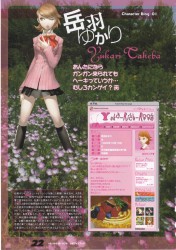
The art’s really nice. I wasn’t familiar with Shigenori Soejima’s art prior to playing Persona 4, but his work in P3P is crucial. He has to provide a solid foundation for your imagination to fill in the blanks due to the overall lack of animation, and he does it well.
Characters are extremely well designed, and change as events in the game progress. Junpei has peachfuzz on his chin and a habit of wearing tank tops. Your character likes earphones. Everyone has summer, winter, and other special outfits. Mitsuru’s high class nature and faux French affectations come through in her design. Fuuka is stylish, but subdued. Yukari’s pink sweater and heart choker suggests things about her character. Aigis’s limbs give her a creepy flair, like a clockwork teenager. I think my favorite design is Akihiko’s, with his red sweater vest, suggesting a preppy kid, but his ever present bandage and fighting gloves suggest otherwise. There’s real personality in the designs, but working within the constraints of a school uniform.
I like the way Soejima uses colors, too. Yukari’s black uniform is hidden beneath her pink sweater. Ken’s rocking a black and orange color scheme that works surprisingly well. Aigis is mostly white, save for her major joints and weapons. Mitsuru is black, white, and then red. Black, and to a lesser extent, red, is a dominant color in most of these designs, thanks to the school uniform, but the way it plays with the rest of the colors in these designs is interesting. The designs pop, distinct from each other but clearly related. The palette uses soft gradients and bright colors, and the end result is a game that’s really very nice to look at.
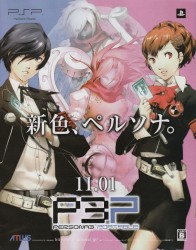

P3P (for me) is to the PSP was FFVII was to my PS1. I’ve finished my 1st playthrough like 2 weeks ago, sinking about 60 hours into the game. Didn’t max out all my social links, but the majority of them, and I want to screw around with some other PSP titles before I make my Fem-protaginist run. It’s an incredible journey, and seeing how you’ve just got up to the point where Koro joins your party, expect so serious emotion highs and lows in the near future. The game gets real brutal/depressing towards the end.
This was a game that held not only me but my roommates entranced for hours on end. It’s weirdly compelling to watch, thanks to the whole chose-your-own-soap-opera thing going on with the semi-dating part of the game.
I really wish more RPGs would pick up this kind of mechanic. The dungeon crawls eventually got a bit long and I ground more than I should have because I let myself obsess, but the social interaction was always great entertainment.